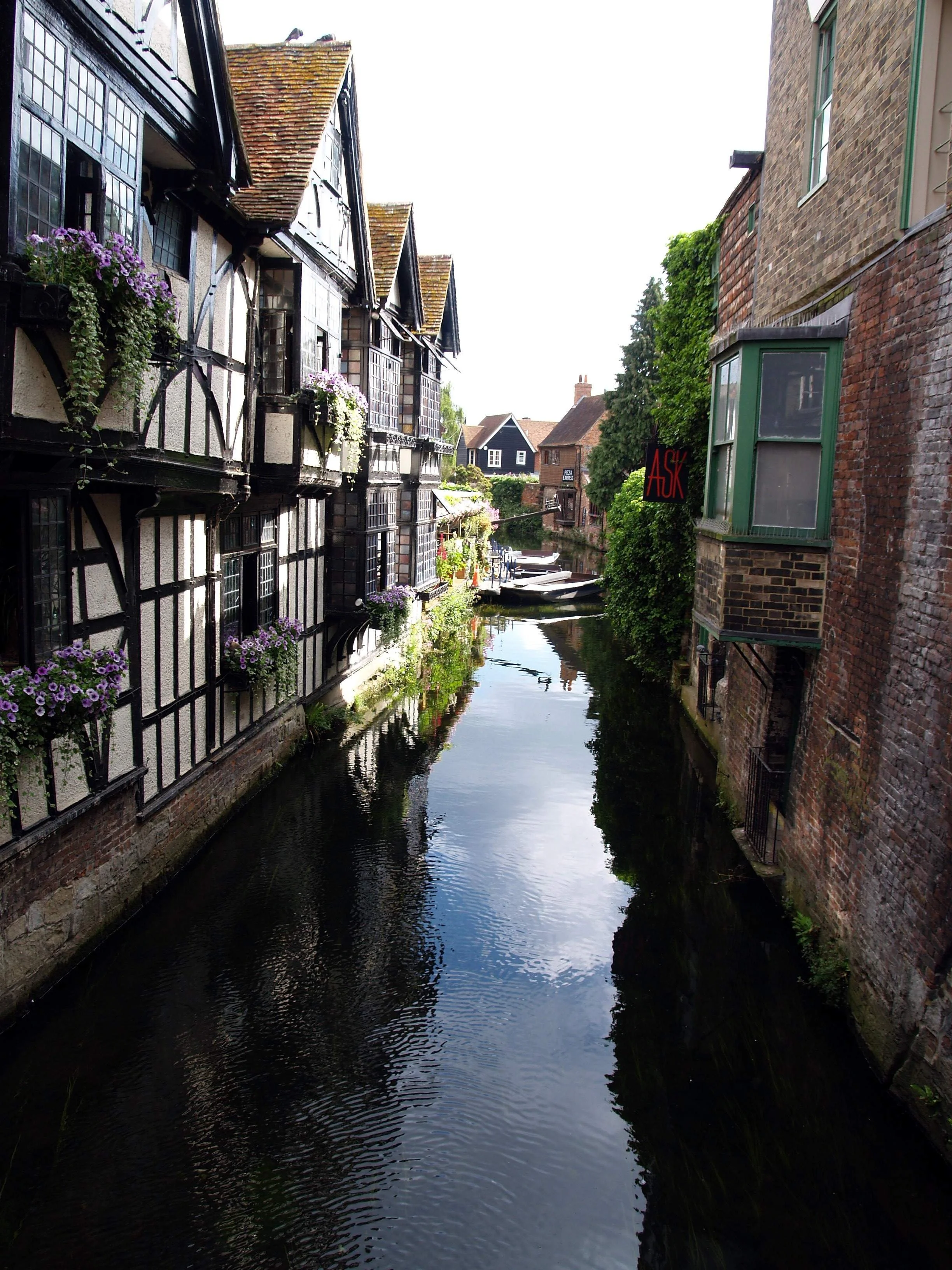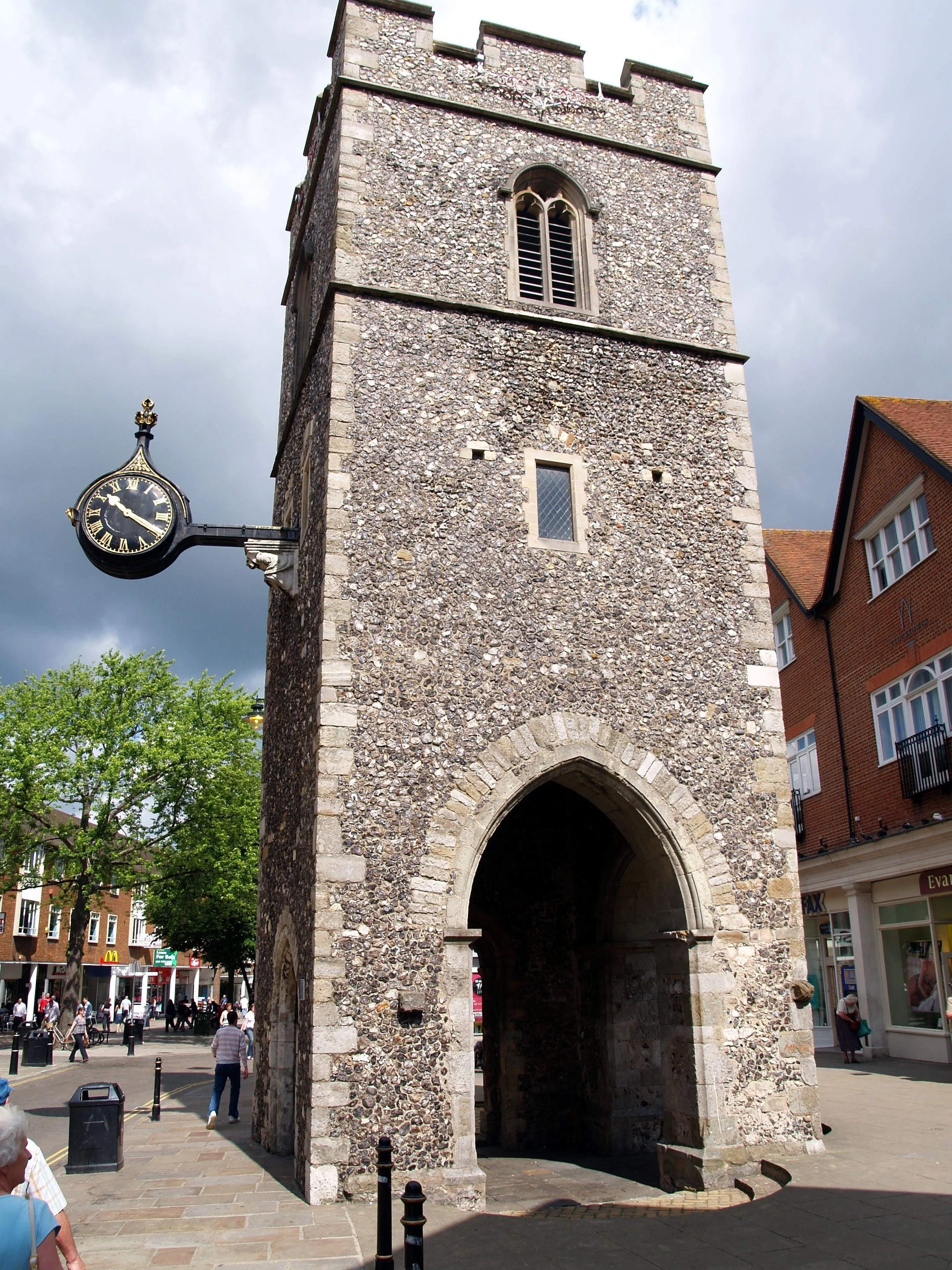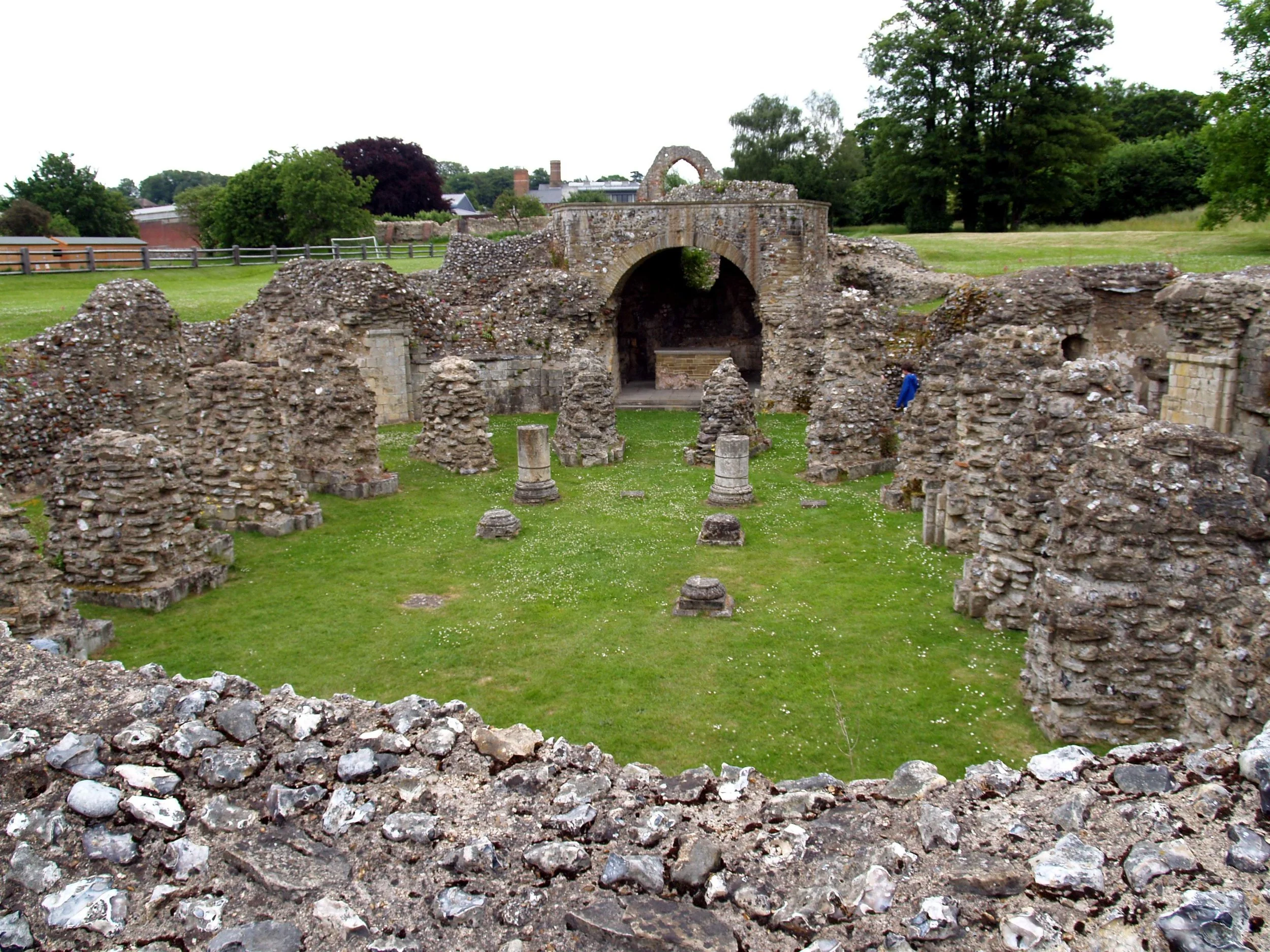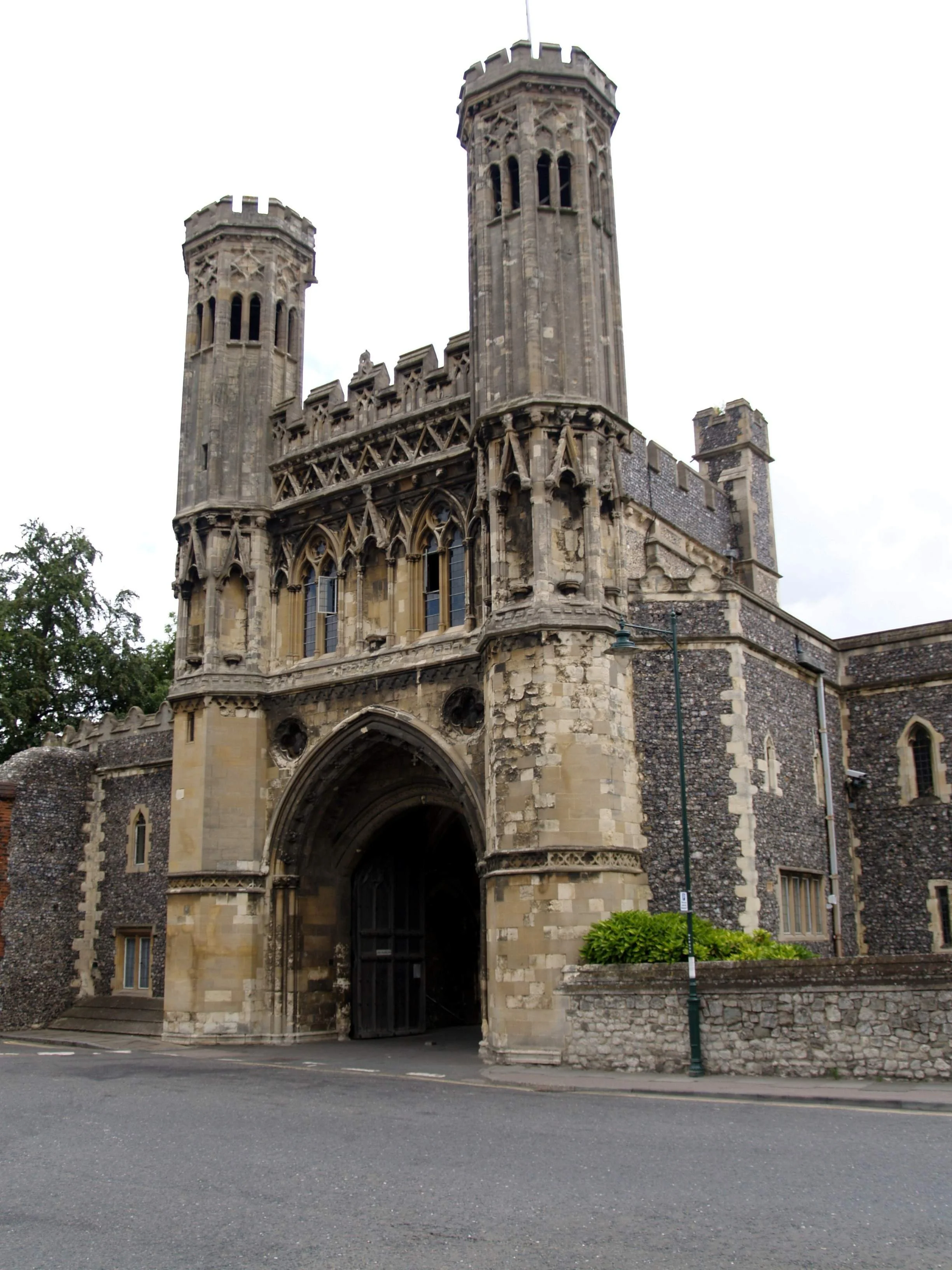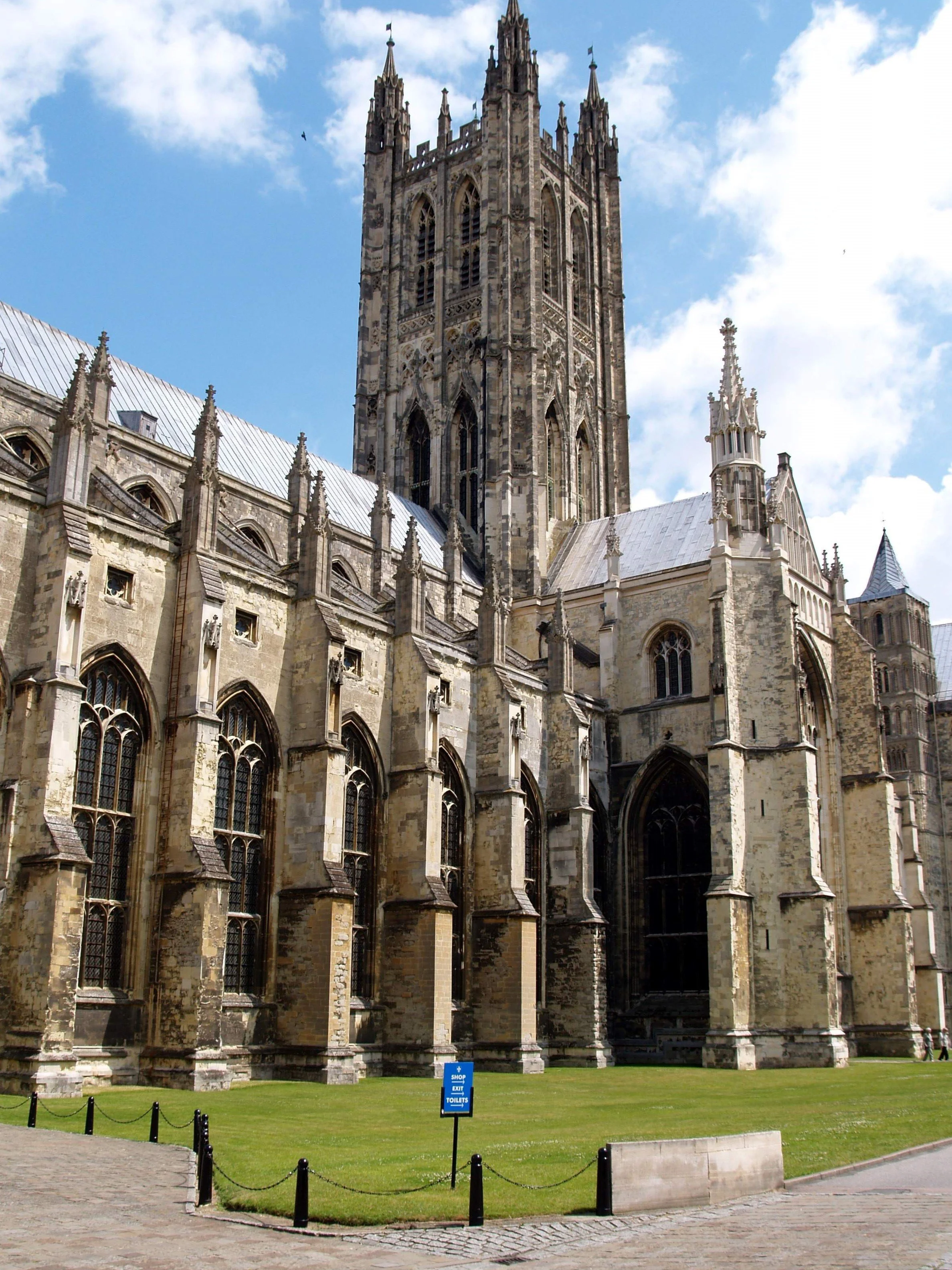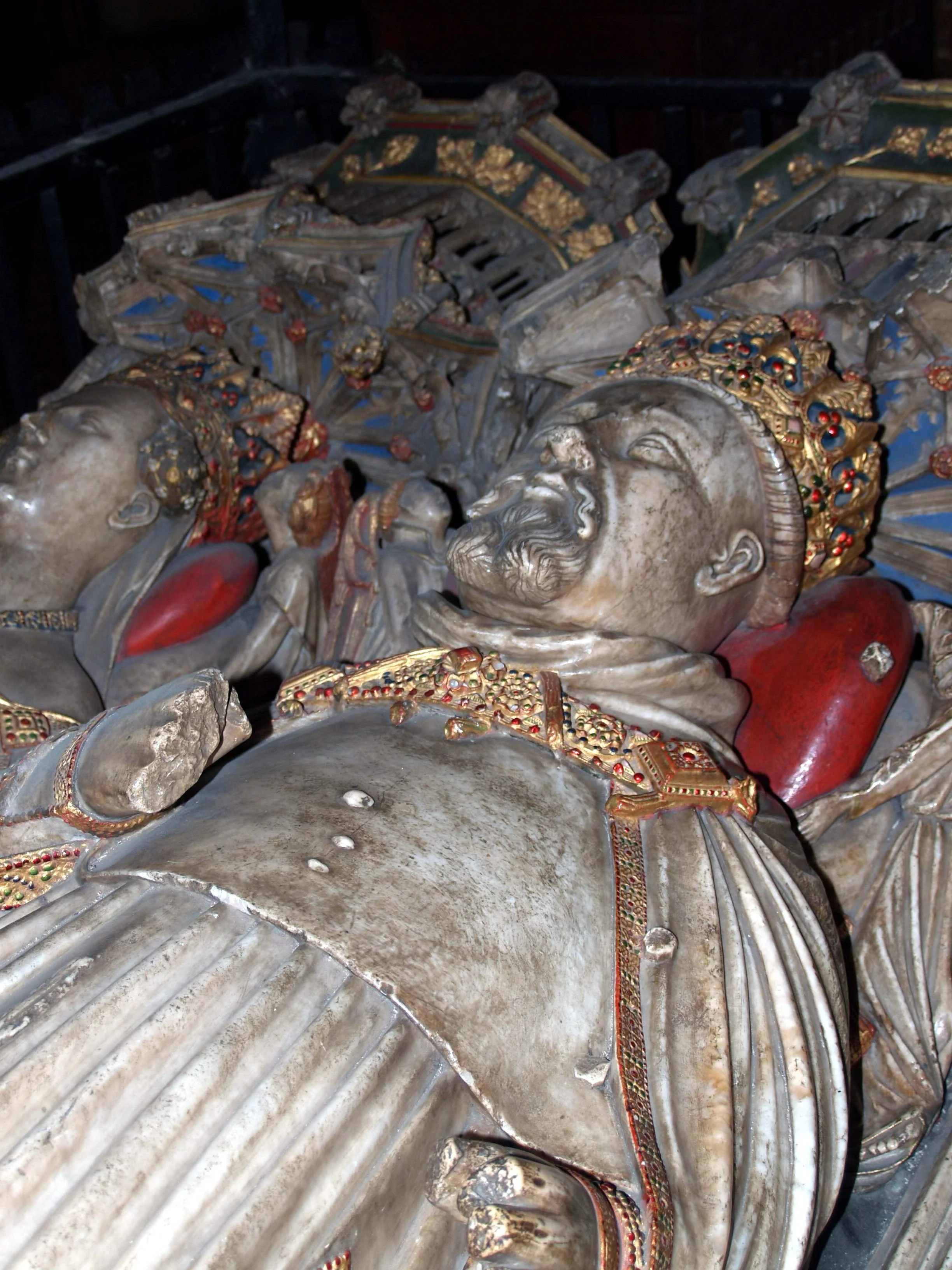United Kingdom. Medieval Walls, Cobbled Streets, and an Infamous Murder
Within a country of stone castles, medieval churches, and quaint streets, the City of Canterbury (population 50,000) has an especially colorful history. Physical evidence tells a story of the city’s history from its settlement by Celtic tribes to its Roman occupation and expansion during medieval times. Canterbury is also uniquely connected to the Anglican faith (aka Church of England).
Canterbury is in the County of Kent and about 90 kilometers southeast of London. Positioned on the River Stour, the town has been inhabited since prehistoric times. When the Romans captured the city in the 1st century AD, it was occupied by a Celtic tribe called the Cantiaci. In planning the town’s expansion, the Romans applied a grid system for laying out streets and during the 3rd century they constructed an encircling defensive wall. The Romans abandoned the city in the 5th century, and it remained empty for a hundred years before its reoccupation. The city thrived under Anglo-Saxon control, in part because of trade involving pottery, leather, and clothing. Residents survived raids by Viking armies in the 11th century and the Black Death in the mid-14th century.
We toured Canterbury Cathedral which houses offices used by the Archbishop of Canterbury, principal leader of the Church of England. The abbey’s history dates to the 6th century when Pope Gregory I ordered Augustine, Abbot of St. Andrew’s Benedictine Abbey in Rome, to convert England’s Anglo-Saxons to Christianity. Augustine founded the cathedral in 597. One of the most infamous murders in English history took place there in 1170. The Archbishop of Canterbury, Thomas Beckett, frequently quarreled with King Henry II. Overhearing Henry II remark, “Will no one rid me of this turbulent priest?” three of the king’s knights traveled to Canterbury. Locating Beckett in a side chapel (the Northwest Transept), the knights hacked the archbishop to death. On learning about the murder, the king was racked with grief and went into deep mourning. Today, Beckett is a saint in the Roman Catholic faith and a martyr within the Anglican Church. The story of pilgrims trekking to Canterbury with the purpose of visiting Beckett’s shrine is told by Geoffrey Chaucer in the 15th century book, The Canterbury Tales.
We followed stone foundations that mark the ruins of Saint Augustine Abbey which was reduced to rubble in the 16th century during King Henry VIII’s suppression of monasteries and other church institutions. Behind the ruins is St. Augustine’s College, established in 1848, and St. Martin’s Church, the oldest church in continuous use within the English-speaking world.
Our route to Old Town took us through Westgate Tower, England’s largest surviving medieval gate. The gate is formed by two 18-meter high cylindrical-shaped stone structures connected at the top. When it was no longer needed for defense, the gate was repurposed to serve as the city’s jail. Famous people held there include Robert Cushman who was among organizers of the Mayflower voyage in 1620. During WWII more than a thousand of the city’s buildings were destroyed by bombs dropped by German aircraft. Most were rebuilt and today Old Town is filled with houses that feature timber casement and sash windows.
Another stop was the Roman Museum. In 1868, workmen digging trenches for a drainage system discovered a mosaic floor 2.4 meters below street level. Other ancient infrastructure was uncovered during WWII after German bombs exposed Roman-era underfloor heating systems, tile-covered corridors, and wall paintings. Today, the museum provides in situ opportunities to see Roman artwork and innovations. We passed St. George’s Tower that is all that remains of the medieval Church of St. George the Martyr. Located on High Street and featuring a crenellated parapet and corbelled clock, it is the church where playwright Christopher Marlowe was baptized in 1564. Added in either the 14th or 15th century, the clock tower survived German bombs.

